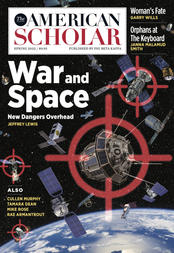Random Read
Safer Than Childbirth {excerpt}
At our rural county’s historical society, the past lives loosely in bulletins, news clippings, plat books, and handwritten index cards. It’s pieced together by pale, gray-haired women who sit at oak tables and pore over old photos. Western sun filters in, half-lighting the women as they name who’s pictured, who has passed on. Other volunteers gossip and cut obituaries from local newspapers.
I was sent here by hearsay. For years, my neighbor has claimed that the old cemetery in the low-lying field on my Wisconsin property contains more bodies than the scant number of tombstones indicates. The epic flood of 1978 washed away the markers of the nameless—Civil War soldiers, he says. I want to know who the dead were in life. After many walks through the cemetery, I’m familiar with the markers that remain. One narrow footstone reads simply, “MAS.” Three marble headstones rest at odd angles among the box elder trees. Stained, eroded, and lichen crusted, the stones belong to a boy and two baby girls who died in the 1850s and ’60s. On the boy’s is a relief of a weeping willow; on the sisters’ are rosebuds. Signs of young lives cut short.
I’m sitting at one of the oak tables when Carol, the historical society’s assistant curator, hands me a binder of cemetery records. A stranger has just sat beside me, her husband opposite us. I study the list of those buried on my land. I recognize the children’s names. I don’t see any men’s names. But there’s the name of a woman I’ve never heard of. I read it aloud: “Nancy Ann Harris.”
The stranger says, “She was married to Benjamin Franklin Harris, who’s my husband’s great-great-great uncle.” She nods to her husband, who nods in confirmation.
Astonished, I turn to face her. “How do you know that?”
“She died of an abortion,” the stranger adds. “Apparently, she’d had a lot of them.”
“How do you know that? ”
“Her death record.”
“Why would they put that in the public record?”
Carol, standing nearby, says, “It was a different time.”
I want to ask her what she means, but another woman, who has been eavesdropping, leans toward me and frowns. “That Nancy must have been something else,” she says.
I’m startled by her dismissive tone, her vague implication. I don’t think quickly enough to challenge her. Instead, the rest of us—Carol and I and the stranger and her husband, whose great-great-great aunt lies in my field—turn silent. I look down again at the five names of the buried. Long after I leave the table, I keep wishing I’d spoken up.
 Published in the Spring 2022 issue of The American Scholar.
Published in the Spring 2022 issue of The American Scholar.
